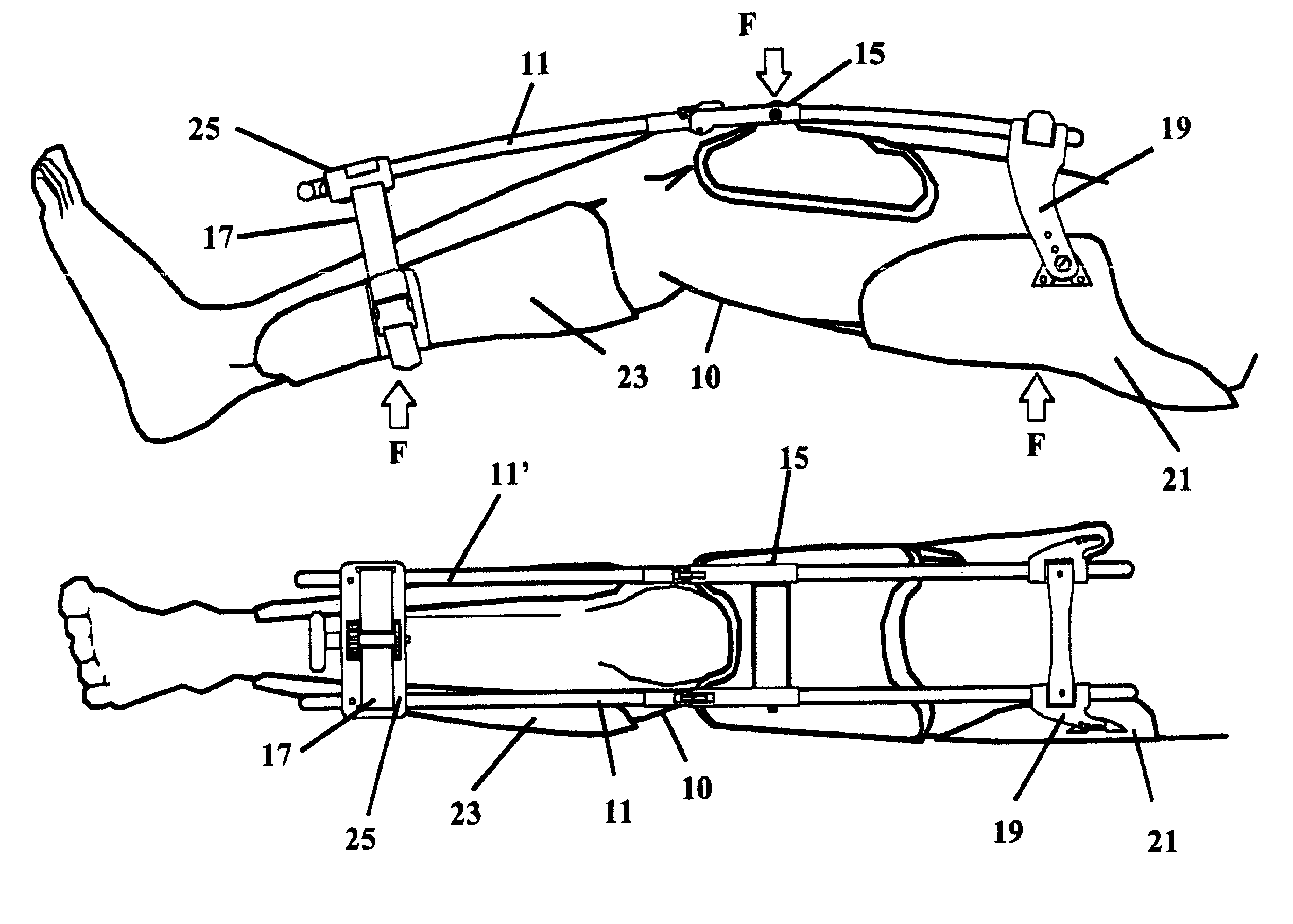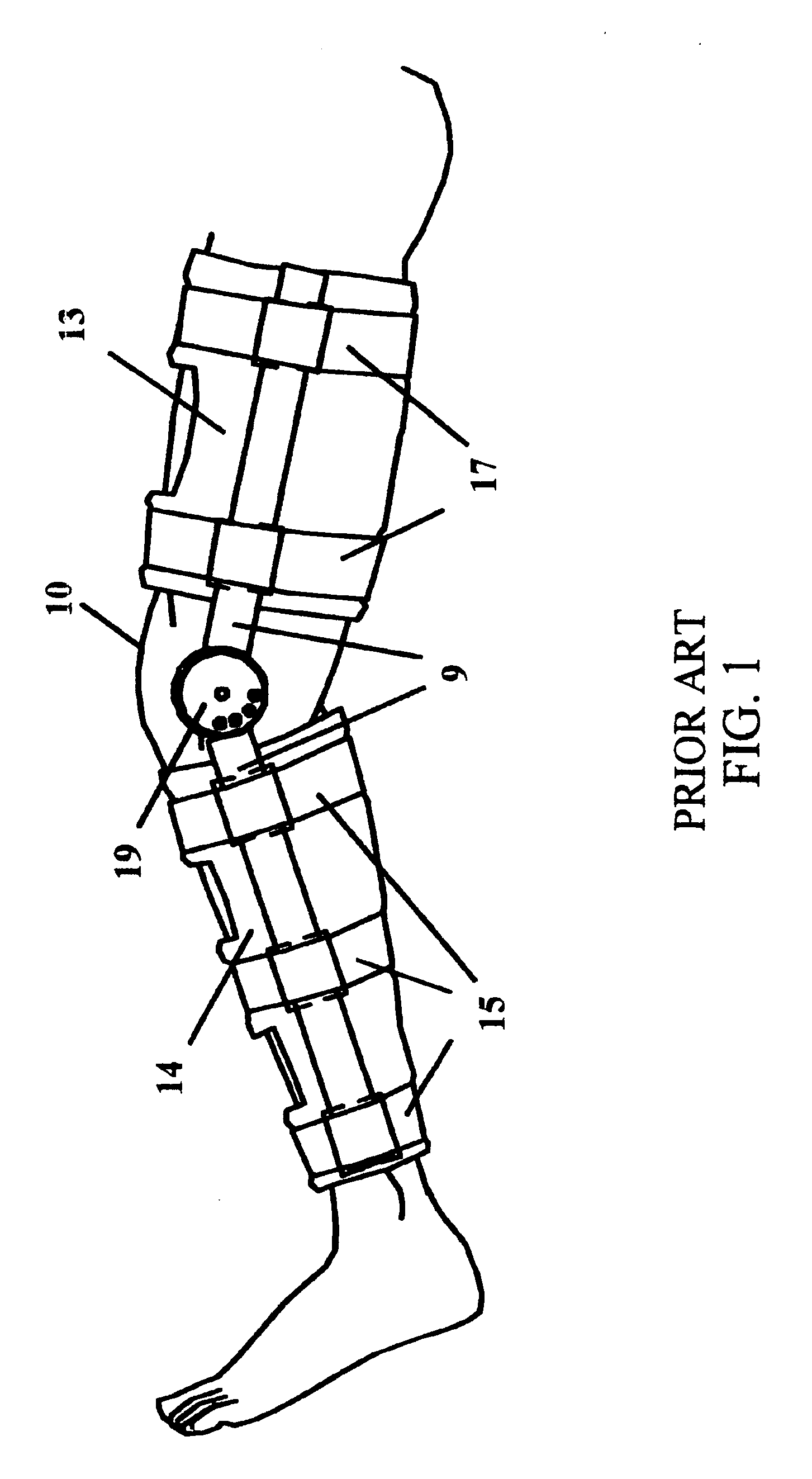Orthopedic splint
- Summary
- Abstract
- Description
- Claims
- Application Information
AI Technical Summary
Benefits of technology
Problems solved by technology
Method used
Image
Examples
Embodiment Construction
[0046]For descriptive clarity and continuity, illustrations depict the orthopedic splint of the present invention as applied to a lower limb of a human. Functionality and attributes of the present invention illustrated are not limited to a lower limb and apply equally in function and use to other limbs, extremities and digits of the human body. Though the illustrations and description depict two flexible support members 11 and 11′, the invention is not limited to this structure. For example, one flexible support member may be used, however, two such members provide a more stable splint.
[0047]Referring now to FIGS. 6A and 6B, the splint device of the present invention comprises one or more flexible support members 11 and 11′ oriented superior to the surface of the limb or digit 10. The flexible support members 11 and 11′ attach to a fulcrum point 15 located superior and in proximity to the limb joint (e.g., knee in the illustrations), and when placed under tension transfer force F vi...
PUM
 Login to View More
Login to View More Abstract
Description
Claims
Application Information
 Login to View More
Login to View More - R&D
- Intellectual Property
- Life Sciences
- Materials
- Tech Scout
- Unparalleled Data Quality
- Higher Quality Content
- 60% Fewer Hallucinations
Browse by: Latest US Patents, China's latest patents, Technical Efficacy Thesaurus, Application Domain, Technology Topic, Popular Technical Reports.
© 2025 PatSnap. All rights reserved.Legal|Privacy policy|Modern Slavery Act Transparency Statement|Sitemap|About US| Contact US: help@patsnap.com



